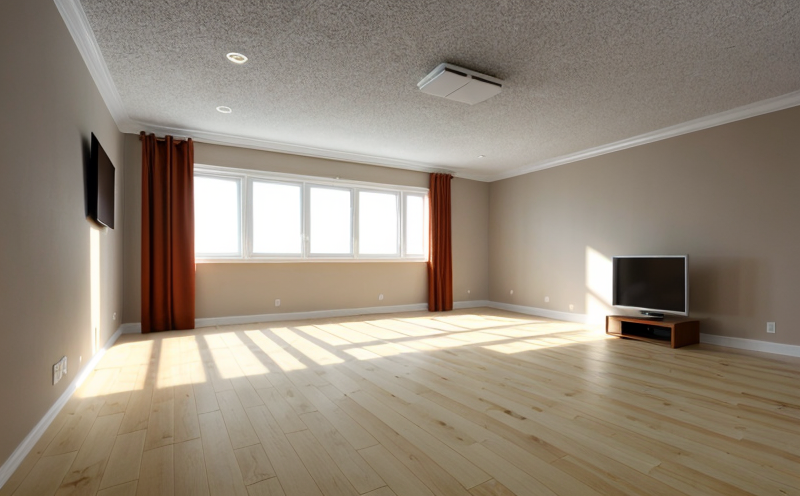ISO 3741 Sound Power Level Testing in Reverberation Rooms
The testing of sound power levels in reverberation rooms is a crucial part of the acoustic environment assessment for various sectors, particularly in the design and development of buildings. ISO 3741:2019 provides a standard method to measure the total sound power level emitted by sources within an enclosed space, such as a room or enclosure.
This test is essential when assessing the acoustic performance of spaces like auditoriums, theaters, conference halls, and other areas where sound quality plays a significant role. By measuring the sound power levels, we can ensure that these spaces meet the required standards for speech intelligibility, background noise, and overall acoustics.
The reverberation room approach involves placing the source in an enclosed space with controlled absorption characteristics to minimize reflections from walls, floors, and ceilings. This method ensures that sound energy is absorbed efficiently, allowing accurate measurement of the emitted power level without interference from external factors. The test setup includes a calibrated noise generator and a microphone array for capturing the sound pressure levels at various points within the room.
The process begins with careful preparation of the specimen or source to be tested. This involves ensuring that it is placed in a position where its sound field can interact freely with the surrounding environment. Once set up, the noise generator produces controlled noise signals, which are used to excite the specimen. The microphone array then captures the resultant sound pressure levels at multiple points within the room.
The data collected from these measurements is analyzed using specialized software that calculates the total sound power level emitted by the source. This calculation takes into account the geometry of the room, the absorption characteristics of the walls and other surfaces, and the position of the microphone array relative to the source.
Understanding this process allows us to appreciate why ISO 3741 testing is vital for ensuring compliance with various international standards that govern the acoustics in buildings. By adhering to these standards, we can create spaces that are not only functional but also provide an optimal listening experience for occupants.
| Step | Description |
|---|---|
| 1 | Set up the reverberation room with controlled absorption characteristics. |
| 2 | Place the specimen in a position that allows for free interaction of its sound field. |
| 3 | Excite the specimen using controlled noise signals from a noise generator. |
| 4 | Capture sound pressure levels at multiple points with a microphone array. |
| 5 | Analyze the captured data to calculate the total sound power level emitted by the source. |
Why It Matters
The importance of ISO 3741 testing in reverberation rooms cannot be overstated. Accurate measurement of sound power levels is essential for ensuring that spaces meet the required acoustic standards, which are critical for creating comfortable and effective environments.
- Ensures compliance with international acoustics standards like ISO 3741:2019.
- Improves speech intelligibility in auditoriums and theaters.
- Reduces background noise levels, leading to better listening experiences.
- Aids in the design of spaces that are optimized for acoustics, enhancing overall user satisfaction.
In sectors such as architecture and construction, this testing plays a pivotal role in achieving high-quality acoustic environments. Compliance with these standards is not only beneficial for the end-users but also ensures that buildings meet regulatory requirements and industry best practices.
Scope and Methodology
| Step | Description |
|---|---|
| 1 | Set up the reverberation room with controlled absorption characteristics. |
| 2 | Place the specimen in a position that allows for free interaction of its sound field. |
| 3 | Excite the specimen using controlled noise signals from a noise generator. |
| 4 | Capture sound pressure levels at multiple points with a microphone array. |
| 5 | Analyze the captured data to calculate the total sound power level emitted by the source. |
International Acceptance and Recognition
- The ISO 3741:2019 standard is widely recognized across Europe, North America, and Asia.
- Countries like the United States, Canada, and various European nations have adopted this method as part of their national standards for building acoustics.
- ISO 3741 has been endorsed by organizations such as ASTM International and BSI (British Standards Institution).
This widespread adoption underscores the importance and reliability of ISO 3741 sound power level testing. Its acceptance in numerous countries ensures that results obtained from this test are universally recognized, facilitating international collaboration and trade.





